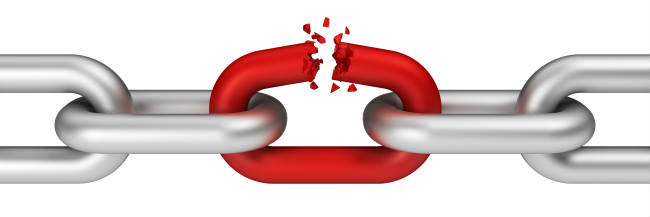Whenever you put a link to another website on your blog, a connection is created between the two pages. Search engines crawl your site and follow any links they find. The link created between the two sites can also have an effect on page rank for the site you’re linking to.
In most cases, linking directly to another site isn’t seen as a problem as search engines will assume you’re sharing a post you like or linking to a site that has some relevance to your own content. The problem arises when Google assumes you’re only adding links to your site to make money, such as adding affiliate links or accepting paid links from other website owners without adding any real value for internet users.
Google doesn’t have a problem with sites containing product affiliate links, as long as there is plenty of useful content displayed along with those promotional links. However, if Google assumes your site is spammy and provides very little value to your visitors, your site will be penalized.
Adding a rel=”nofollow” attribute to an affiliate link offers a great way to avoid the potential of having your SEO efforts penalized. By leaving the link visible to search engines, but adding the appropriate attribute, search engines like Google should ignore the link for SEO purposes.
Google’s Matt Cutts admitted in an interview with SMX Advanced back in 2012 that he encourages webmasters to add ‘nofollow’ to any affiliate links being displayed. In the interview Matt mentions that Google handles the vast majority of affiliate links automatically at their end, but he also cautions that website owners with affiliate links should add the ‘nofollow’ attribute anyway to be safe.
Protecting Your Affiliate Income and Referrals
Encouraging affiliates to use “nofollow” attributes on their links also has advantages for the merchant’s SEO efforts. Search engines may rank their product listings more highly, which in turn makes it easier for visitors to research the products they want, leading them to search for your site to read reviews or find out more information.
If affiliate commissions form a large chunk of your online income, it could be worthwhile to consider updating all your links with the allowable “nofollow” attribute. Even if you’re just starting out in affiliate marketing, there are definite benefits to getting into the habit of adding ‘nofollow’ to any links referring your visitors over to a merchant’s website.
Should Affiliates Use Link Cloaking Tactics Instead?
Many affiliates cloak their affiliate links for a variety of reasons. Some believe link cloaking might help to increase their click-through rate as fewer people will recognize that they’re clicking on an affiliate link. Some webmasters prefer to use cloaking methods to generate shorter, cleaner URLs, rather than displaying long affiliate links. Others use cloaking methods in an effort to hide their identity from the merchant, especially if they’re using disreputable marketing tactics.
Perhaps the most common reason for affiliates to cloak their links is to avoid getting their site penalized by Google. It’s thought that displaying a landing page with nothing more than a bunch of affiliate links on it could jeopardize a website’s ranking. In an effort to boost the quality score of a site with major search engines, many affiliates will cloak their links.
What they’re all overlooking is that link cloaking is against Google’s webmaster quality guidelines.
Should You Use Redirects for Affiliate Links Instead of Cloaking?
Affiliate marketers who have been penalized for link cloaking will usually consider the option of using a sneaky redirect. It’s absolutely fine to redirect your URL if you’ve moved your site to a new domain. However, sneaky redirects are considered a violation of Google’s webmaster quality guidelines.
A good example of a sneaky redirect is where the webmaster intentionally redirects a visitor to a different page than the one shown to a search engine crawler. The object behind a sneaky redirect is that the search engine crawler will index the original page, while visitors to the site are redirected to a completely different site displaying different content.
Sites caught using sneaky redirect tactics are eventually penalized by Google for violating their quality guidelines. Rather than risk your site’s rankings, you can simply update your affiliate links to include the “nofollow” attribute.
How to Update Your Links to “nofollow” Manually
If you’re updating your links manually, simply locate the link you want to change and add the rel=”nofollow” attribute. For example, the HTML code for your link should look like this:
Amend the code by pasting in the correct attribute after your affiliate link, but before the closing bracket, like this:
Once the HTML code is amended you can update your site and the changes will be reflected immediately. If your links are behind banner displays, log into your affiliate account and download new banners. Be sure to check that the “nofollow” attribute is added to your new banners before you upload them to your site.
How to Update Your Links to “nofollow” in WordPress
If you’re using the WordPress platform for your website, you can add a plugin to help you add the rel=”nofollow” attribute to your affiliate links. Most plugins of this type give you the option of clicking a “nofollow” checkbox whenever you insert a link into a post.
There are plenty of different plugins available to make the task easier for you. Some of these include:
If you’re unsure about when to add the “nofollow” attribute to your links, there’s a simple rule of thumb you can follow. Any time you don’t want your site to be seen as endorsing a link to another site, add the “nofollow” attribute to the link. It really is as easy as that.



